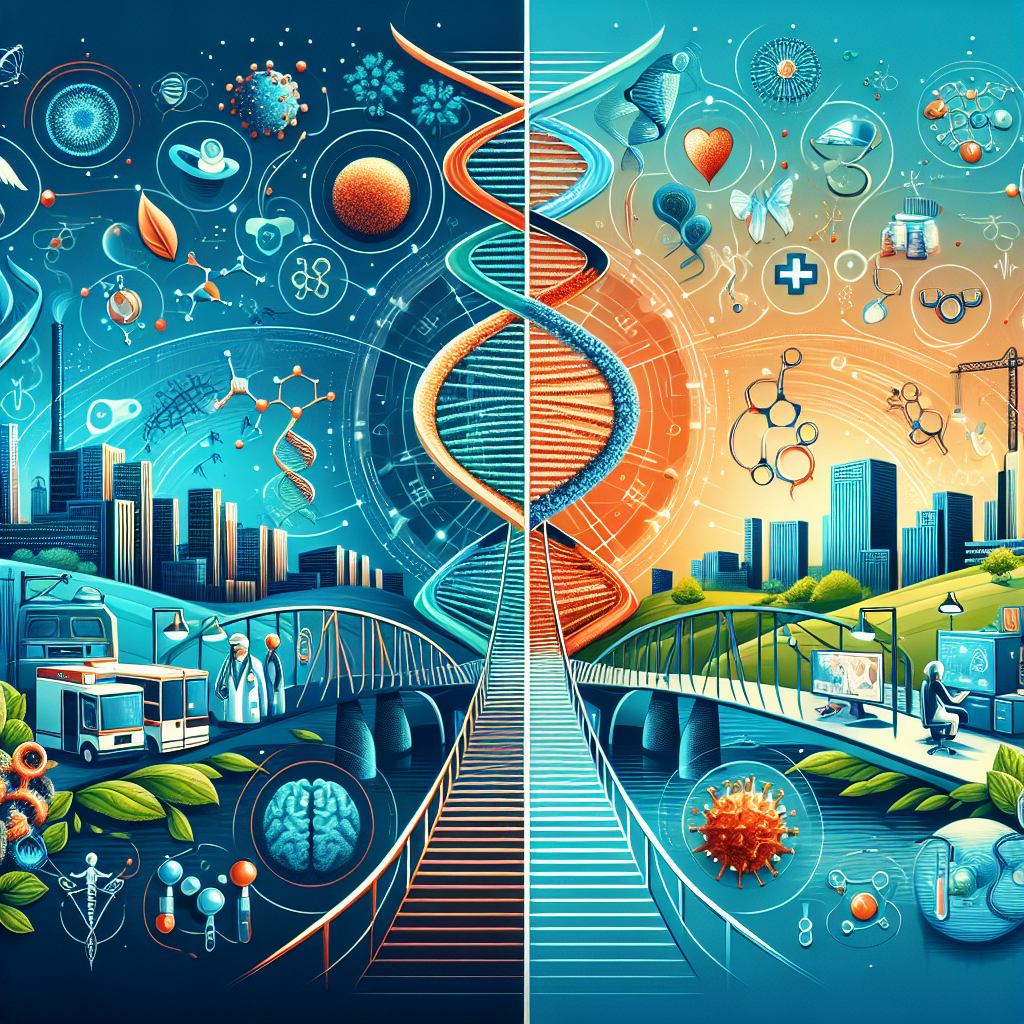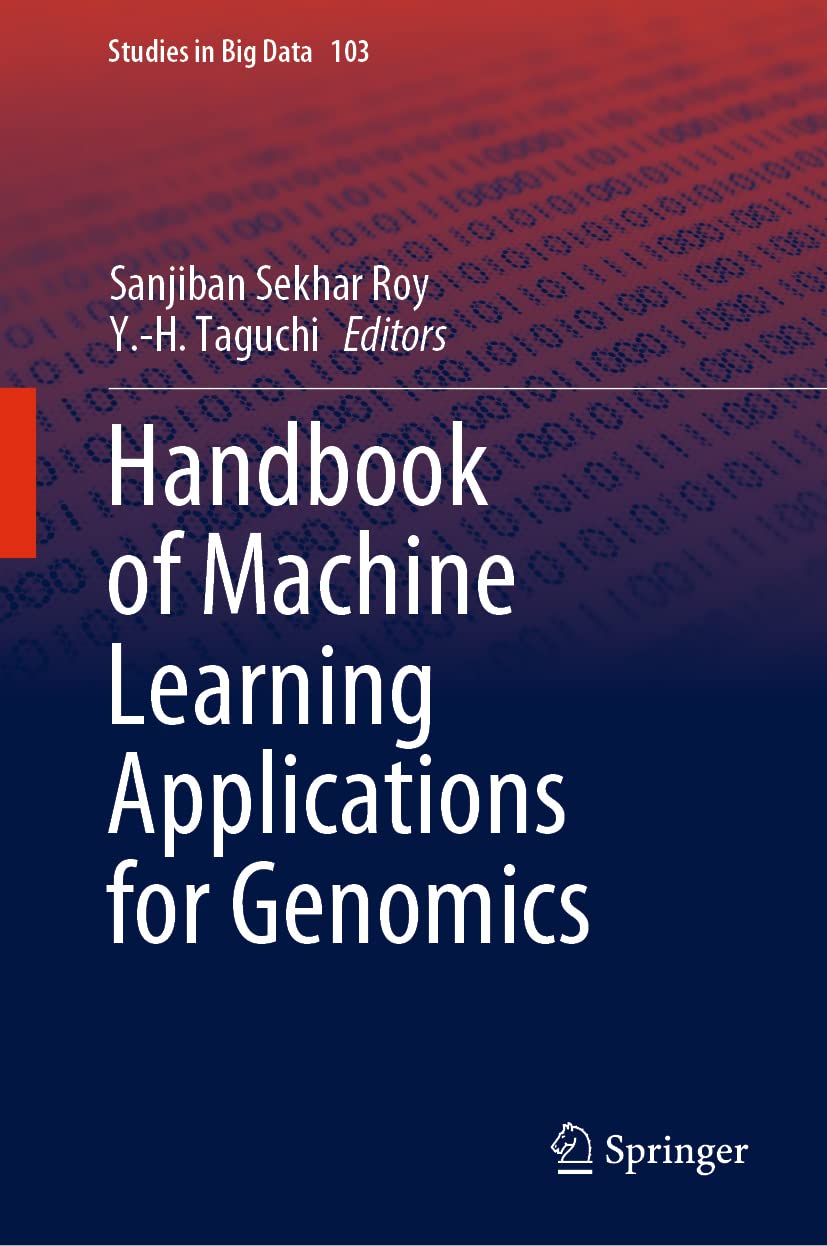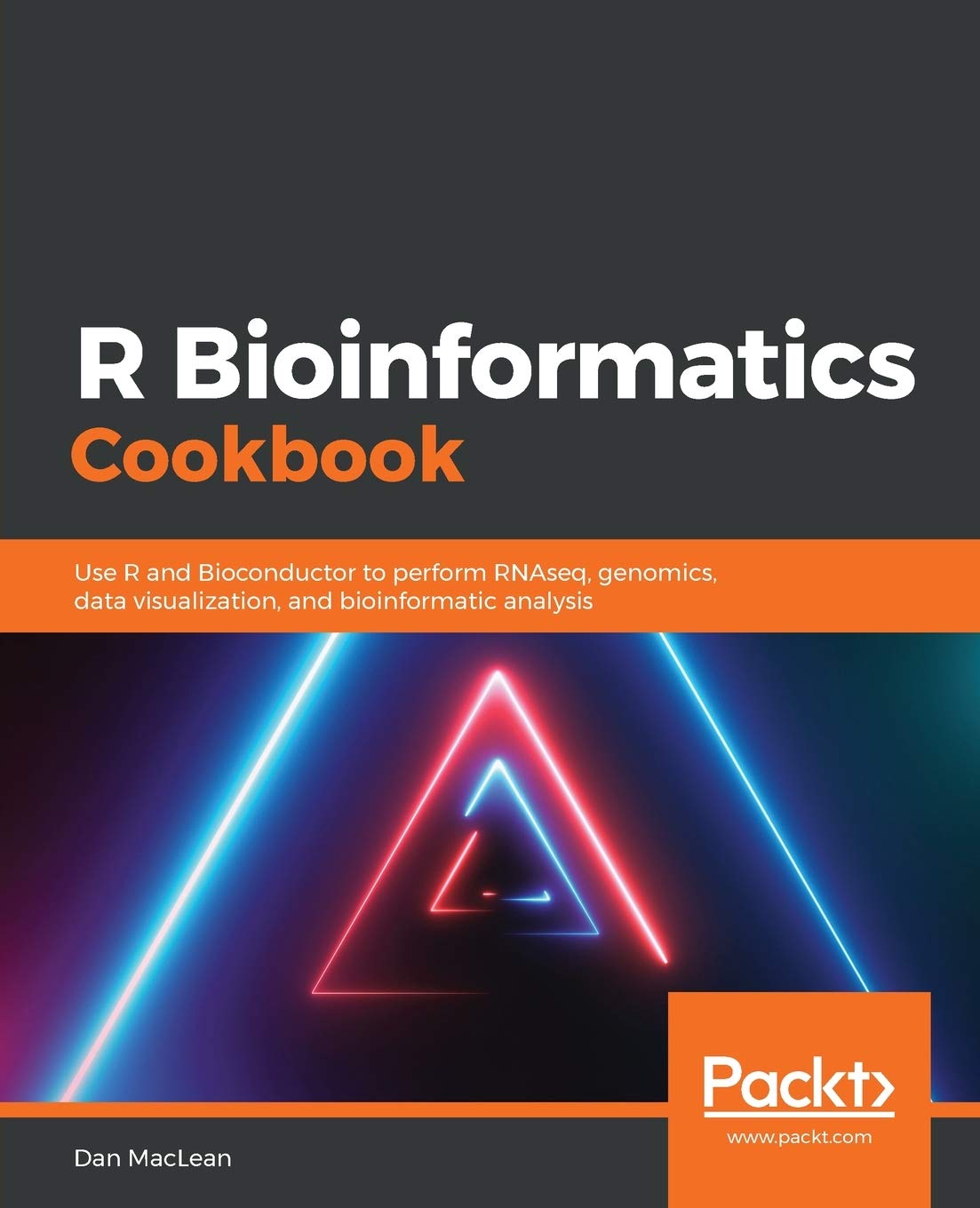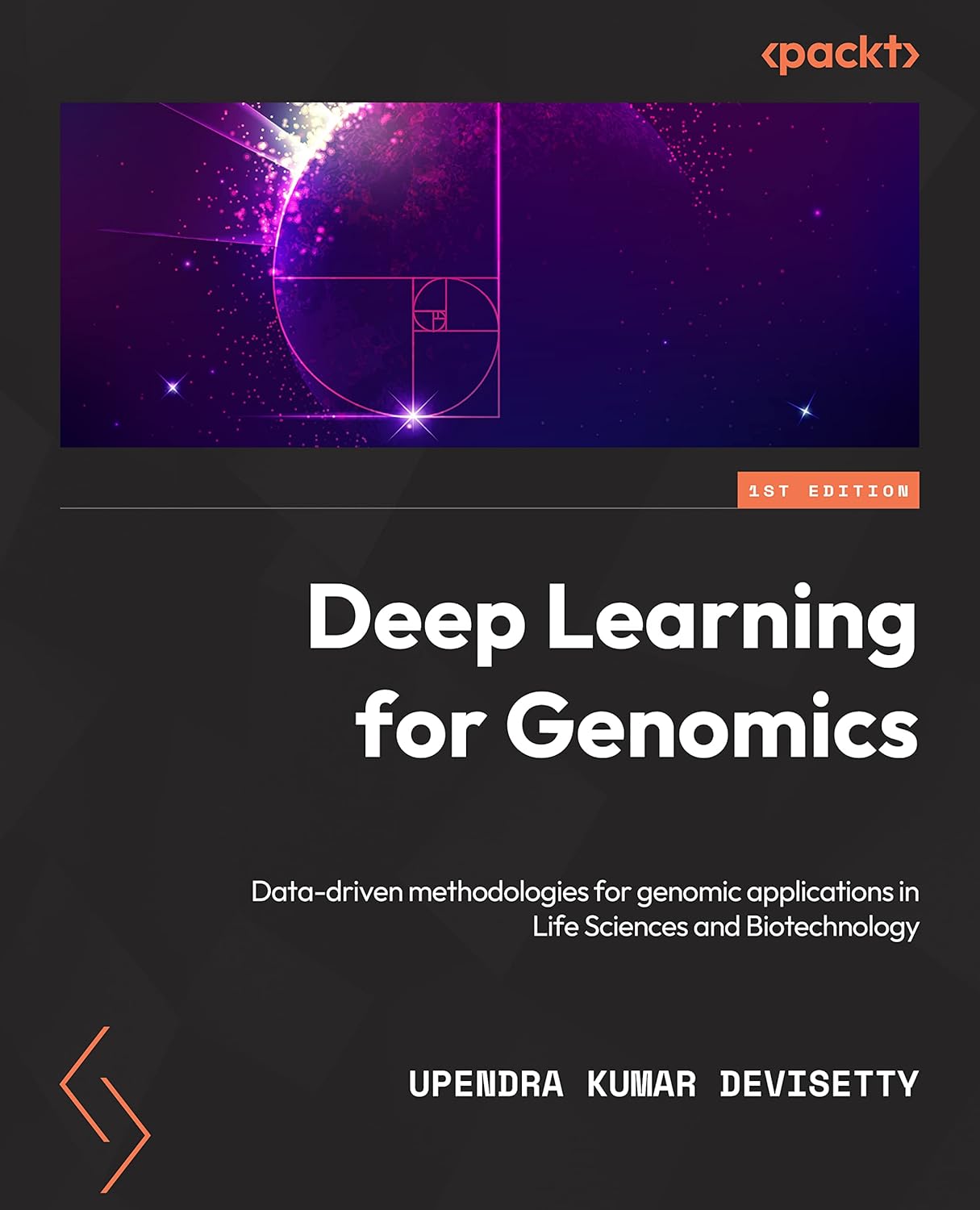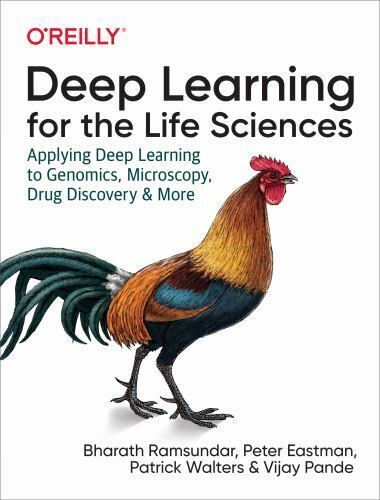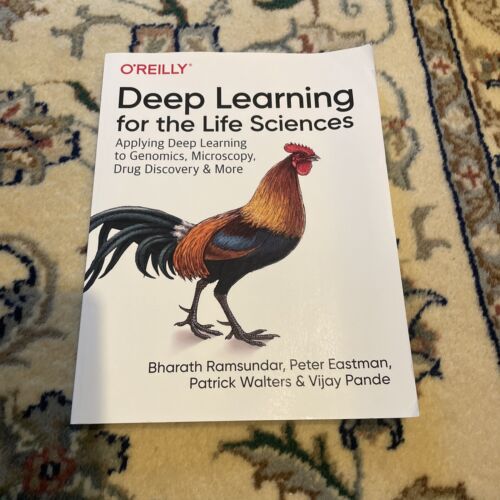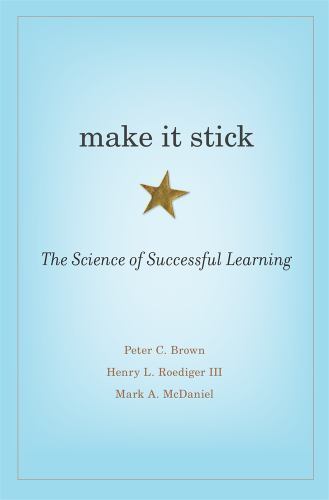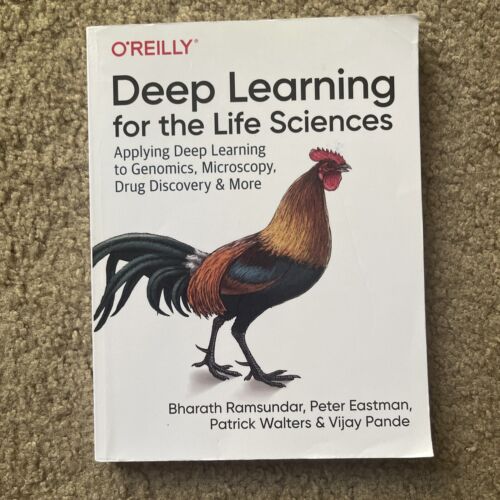Division of Mental Health and Addiction, Oslo University Hospital, Oslo, Norway
Kevin S. O’Connell, Elise Koch, Nadine Parker, Oleksandr Frei, Alexey Shadrin, Olav B. Smeland, Markos Tesfaye, Martin Tesli, Ingrid Melle & Ole A. Andreassen
Center for Precision Psychiatry, University of Oslo, Oslo, Norway
Kevin S. O’Connell, Elise Koch, Nadine Parker, Ole Kristian Drange, Alexey Shadrin, Olav B. Smeland, Markos Tesfaye, Martin Tesli & Ole A. Andreassen
Department of Psychiatry, Icahn School of Medicine at Mount Sinai, New York, NY, USA
Maria Koromina, Jaroslav Bendl, Tereza Clarence, John F. Fullard, Jessica S. Johnson, Dolores Malaspina, Laura G. Sloofman, René S. Kahn, Panos Roussos, Eli A. Stahl & Niamh Mullins
Charles Bronfman Institute for Personalized Medicine, Icahn School of Medicine at Mount Sinai, New York, NY, USA
Maria Koromina & Niamh Mullins
Department of Genetics and Genomic Sciences, Icahn School of Medicine at Mount Sinai, New York, NY, USA
Maria Koromina, Jaroslav Bendl, Tereza Clarence, John F. Fullard, Jessica S. Johnson, Dolores Malaspina, Laura G. Sloofman, Panos Roussos, Eli A. Stahl & Niamh Mullins
Division of Psychiatry, University College London, London, UK
Tracey van der Veen, Nicholas Bass, Andrew McQuillin & Tracey van der Veen
Department of Human Genetics, David Geffen School of Medicine, University of California Los Angeles, Los Angeles, CA, USA
Toni Boltz & Roel A. Ophoff
Institute of Human Genetics, University of Bonn, School of Medicine and University Hospital Bonn, Bonn, Germany
Friederike S. David, Eva C. Beins, Isabelle Claus, Franziska Degenhardt, Stefan Herms, Per Hoffmann, Eva C. Schulte, Lisa Sindermann, Sven Cichon, Markus M. Nöthen & Andreas J. Forstner
Department of Psychiatry and Psychotherapy, University of Marburg, Marburg, Germany
Friederike S. David, Frederike Stein & Tilo Kircher
Centre for Neuropsychiatric Genetics and Genomics, Division of Psychological Medicine and Clinical Neurosciences, Cardiff University, Cardiff, UK
Jessica Mei Kay Yang, Valentina Escott-Price, Liz Forty, Peter A. Holmans, Antonio F. Pardiñas, James T. R. Walters, Nicholas Craddock, Ian Jones, George Kirov, Michael C. O’Donovan, Michael J. Owen & Arianna Di Florio
23andMe Inc., Sunnyvale, CA, USA
Keng-Han Lin & Xin Wang
Social, Genetic and Developmental Psychiatry Centre, King’s College London, London, UK
Jonathan R. I. Coleman, Gerome Breen & Panagiotis Ferentinos
NIHR Maudsley BRC, King’s College London, London, UK
Jonathan R. I. Coleman & Gerome Breen
Mental Health and Neuroscience, QIMR Berghofer Medical Research Institute, Brisbane, Queensland, Australia
Brittany L. Mitchell, Penelope A. Lind, Jackson G. Thorp & Sarah E. Medland
School of Biomedical Sciences and Faculty of Medicine, The University of Queensland, Brisbane, Queensland, Australia
Brittany L. Mitchell & Penelope A. Lind
New York University, New York, NY, USA
Caroline C. McGrouther & Aaditya V. Rangan
Flatiron Institute, New York, NY, USA
Aaditya V. Rangan
School of Biomedical Sciences, Queensland University of Technology, Brisbane, Queensland, Australia
Penelope A. Lind
Department of Medical Epidemiology and Biostatistics, Karolinska Institutet, Stockholm, Sweden
Arvid Harder, Dennis Hellgren, Mikael Landén & Patrick F. Sullivan
Center for Disease Neurogenomics, Icahn School of Medicine at Mount Sinai, New York, NY, USA
Jaroslav Bendl, Tereza Clarence, John F. Fullard & Panos Roussos
Friedman Brain Institute, Icahn School of Medicine at Mount Sinai, New York, NY, USA
Jaroslav Bendl, Tereza Clarence, John F. Fullard & Panos Roussos
Institute of Psychiatric Phenomics and Genomics (IPPG), LMU University Hospital, LMU Munich, Munich, Germany
Kristina Adorjan, Monika Budde, Urs Heilbronner, Janos L. Kalman, Sergi Papiol, Eva C. Schulte, Fanny Senner & Thomas G. Schulze
Department of Psychiatry and Psychotherapy, University Hospital, LMU Munich, Munich, Germany
Kristina Adorjan, Janos L. Kalman, Sergi Papiol & Fanny Senner
University Hospital of Psychiatry and Psychotherapy, University of Bern, Bern, Switzerland
Kristina Adorjan
iPSYCH, The Lundbeck Foundation Initiative for Integrative Psychiatric Research, Aarhus, Denmark
Esben Agerbo, Thomas D. Als, Carsten Bøcker Pedersen, Jonas Bybjerg-Grauholm, Jakob Grove, Manuel Mattheisen, Anders D. Børglum, David M. Hougaard, Ole Mors, Preben Bo Mortensen, Merete Nordentoft & Thomas Werge
National Centre for Register-Based Research, Aarhus University, Aarhus, Denmark
Esben Agerbo & Carsten Bøcker Pedersen
Centre for Integrated Register-based Research, Aarhus University, Aarhus, Denmark
Esben Agerbo & Carsten Bøcker Pedersen
Department of Neuroscience, Istituto Di Ricerche Farmacologiche Mario Negri IRCCS, Milano, Italy
Diego Albani
Instituto de Salud Carlos III, Biomedical Network Research Centre on Mental Health (CIBERSAM), Madrid, Spain
Silvia Alemany, Rosa Bosch, Judit Cabana-Domínguez, Sergi Papiol, Maria Soler Artigas, Josep Antoni Ramos-Quiroga & Marta Ribasés
Department of Psychiatry, Hospital Universitari Vall d’Hebron, Barcelona, Spain
Silvia Alemany, Judit Cabana-Domínguez, Maria Soler Artigas, Josep Antoni Ramos-Quiroga & Marta Ribasés
Psychiatric Genetics Unit, Group of Psychiatry Mental Health and Addictions, Vall d’Hebron Research Institut (VHIR), Universitat Autònoma de Barcelona, Barcelona, Spain
Silvia Alemany, Judit Cabana-Domínguez, Maria Soler Artigas, Josep Antoni Ramos-Quiroga & Marta Ribasés
Department of Psychiatry and Behavioral Neuroscience, University of Chicago, Chicago, IL, USA
Ney Alliey-Rodriguez & Elliot S. Gershon
Northwestern University, Chicago, IL, USA
Ney Alliey-Rodriguez
iSEQ, Center for Integrative Sequencing, Aarhus University, Aarhus, Denmark
Thomas D. Als & Manuel Mattheisen
Department of Biomedicine-Human Genetics, Aarhus University, Aarhus, Denmark
Thomas D. Als & Manuel Mattheisen
Department of Neurology, Klinikum rechts der Isar, School of Medicine, Technical University of Munich, Munich, Germany
Till F. M. Andlauer
National and Kapodistrian University of Athens, 2nd Department of Psychiatry, Attikon General Hospital, Athens, Greece
Anastasia Antoniou, Konstantinos Dafnas & Panagiotis Ferentinos
PsychGen Centre for Genetic Epidemiology and Mental Health, Norwegian Institute of Public Health, Oslo, Norway
Helga Ask, Elizabeth C. Corfield & Alexandra Havdahl
PROMENTA Research Centre, Department of Psychology, University of Oslo, Oslo, Norway
Helga Ask & Alexandra Havdahl
Department of Psychiatry and Psychotherapy, University Hospital Carl Gustav Carus, Technische Universität Dresden, Dresden, Germany
Michael Bauer & Andrea Pfennig
Department of Psychiatry and Behavioral Sciences, SUNY Downstate Health Sciences University, Brooklyn, NY, USA
Tim B. Bigdeli & Chris Chatzinakos
VA NY Harbor Healthcare System, Brooklyn, NY, USA
Tim B. Bigdeli
Institute for Genomics in Health, SUNY Downstate Health Sciences University, Brooklyn, NY, USA
Tim B. Bigdeli & Chris Chatzinakos
Department of Epidemiology and Biostatistics, School of Public Health, SUNY Downstate Health Sciences University, Brooklyn, NY, USA
Tim B. Bigdeli
Psychiatry, Brain Center UMC Utrecht, Utrecht, The Netherlands
Marco P. Boks, Annabel Vreeker & René S. Kahn
Research and Communication Unit for Musculoskeletal Health, Division of Clinical Neuroscience, Oslo University Hospital, Ullevål, Oslo, Norway
Sigrid Børte
Institute of Clinical Medicine, University of Oslo, Oslo, Norway
Sigrid Børte, Oleksandr Frei & John-Anker Zwart
HUNT Center for Molecular and Clinical Epidemiology, Department of Public Health and Nursing, Faculty of Medicine and Health Sciences, Norwegian University of Science and Technology, Trondheim, Norway
Sigrid Børte, Bendik S. Winsvold & John-Anker Zwart
Programa SJD MIND Escoles, Hospital Sant Joan de Déu, Institut de Recerca Sant Joan de Déu, Esplugues de Llobregat, Spain
Rosa Bosch & Miquel Casas
Department of Psychiatry, Psychosomatic Medicine and Psychotherapy, University Hospital Frankfurt, Frankfurt am Main, Germany
Murielle Brum, Nathalie Brunkhorst-Kanaan, Thorsten M. Kranz & Andreas Reif
K. G. Jebsen Center for Genetic Epidemiology, Department of Public Health and Nursing, Faculty of Medicine and Health Sciences, Norwegian University of Science and Technology, Trondheim, Norway
Ben M. Brumpton & Kristian Hveem
Center for Neonatal Screening, Department for Congenital Disorders, Statens Serum Institut, Copenhagen, Denmark
Jonas Bybjerg-Grauholm & David M. Hougaard
Psychiatry, University of California San Francisco, San Francisco, CA, USA
William Byerley
School of Biomedical Sciences and Pharmacy, The University of Newcastle, Callaghan, New South Wales, Australia
Murray J. Cairns
Precision Medicine Research Program, Hunter Medical Research Institute, New Lambton, New South Wales, Australia
Murray J. Cairns
Section of Psychiatry, Department of Medical Sciences and Public Health, University of Cagliari, Cagliari, Italy
Bernardo Carpiniello & Mirko Manchia
Department of Psychiatry and Forensic Medicine, Universitat Autònoma de Barcelona, Barcelona, Spain
Miquel Casas & Josep Antoni Ramos-Quiroga
Fundació Privada d’Investigació Sant Pau (FISP), Barcelona, Spain
Miquel Casas
Department of Psychiatry, Mood Disorders Program, McGill University Health Center, Montreal, Québec, Canada
Pablo Cervantes & Cristiana Cruceanu
Department of Psychiatry, National Taiwan University Hospital, Taipei, Taiwan
Hsi-Chung Chen & Po-Hsiu Kuo
Department of Psychiatry, College of Medicine, National Taiwan University, Taipei, Taiwan
Hsi-Chung Chen
Division of Psychiatry, University of Edinburgh, Edinburgh, UK
Toni-Kim Clarke
Department of Quantitative Health Sciences Research, Mayo Clinic, Rochester, MN, USA
Brandon Coombes & Joanna M. Biernacka
Nic Waals Institute, Lovisenberg Diaconal Hospital, Oslo, Norway
Elizabeth C. Corfield & Alexandra Havdahl
Department of Genetics and Bioinformatics, Norwegian Institute of Public Health, Oslo, Norway
Elizabeth C. Corfield
Department of Physiology and Pharmacology, Karolinska Institutet, Stockholm, Sweden
Cristiana Cruceanu
Department of Psychiatry, Universidad Autonoma de Nuevo Leon, Monterrey, Mexico
Alfredo Cuellar-Barboza
Department of Psychiatry and Psychology, Mayo Clinic, Rochester, MN, USA
Alfredo Cuellar-Barboza, Joanna M. Biernacka & Mark Frye
Department of Psychiatry, Laboratory of Psychiatric Genetics, Poznan University of Medical Sciences, Poznan, Poland
Piotr M. Czerski
Center for Multimodal Imaging and Genetics, Departments of Neurosciences, Radiology, and Psychiatry, University of California, San Diego, CA, USA
Anders M. Dale
Division of Psychiatry and Psychotherapeutic Medicine, Medical University of Graz, Graz, Austria
Nina Dalkner, Frederike T. Fellendorf, Susanne Bengesser & Eva Z. Reininghaus
Department of Child and Adolescent Psychiatry, Psychosomatics and Psychotherapy, University Hospital Essen, University of Duisburg-Essen, Duisburg, Germany
Franziska Degenhardt
Department of Psychiatry and Behavioral Sciences, Johns Hopkins University School of Medicine, Baltimore, MD, USA
J. Raymond DePaulo, James B. Potash, Peter P. Zandi, Fernando S. Goes & Thomas G. Schulze
Department of Medical Genetics, Oslo University Hospital Ullevål, Oslo, Norway
Srdjan Djurovic
Department of Clinical Science, University of Bergen, Bergen, Norway
Srdjan Djurovic & Markos Tesfaye
Department of Psychiatry, Sørlandet Hospital, Kristiansand, Norway
Ole Kristian Drange
Department of Psychiatry, University of Arizona College of Medicine-Phoenix, Phoenix, AZ, USA
Ayman H. Fanous
Carl T. Hayden Veterans Affairs Medical Center, Phoenix, AZ, USA
Ayman H. Fanous
Banner-University Medical Center, Phoenix, AZ, USA
Ayman H. Fanous
Academic Psychiatry, Newcastle University, Newcastle upon Tyne, UK
I. Nicol Ferrier
Department of Genetic Epidemiology in Psychiatry, Central Institute of Mental Health, Medical Faculty Mannheim, Heidelberg University, Mannheim, Germany
Josef Frank, Lea Sirignano, Stephanie H. Witt, Lea Zillich, Marcella Rietschel, Thomas G. Schulze & Fabian Streit
Center for Neurobehavioral Genetics, Semel Institute for Neuroscience and Human Behavior, Los Angeles, CA, USA
Nelson B. Freimer & Roel A. Ophoff
Department of Psychiatry and Biobehavioral Science, Semel Institute, David Geffen School of Medicine, University of California, Los Angeles, Los Angeles, CA, USA
Nelson B. Freimer & Roel A. Ophoff
Department of Psychiatry, Dalhousie University, Halifax, Nova Scotia, Canada
Julie Garnham, Claire O’Donovan, Claire Slaney, Evangelia Eirini Tsermpini & Martin Alda
Department of Psychological Sciences, University of Missouri, Columbia, MO, USA
Ian R. Gizer
Genetics and Computational Biology, QIMR Berghofer Medical Research Institute, Brisbane, Queensland, Australia
Scott D. Gordon & Nicholas G. Martin
Psychological Medicine, University of Worcester, Worcester, UK
Katherine Gordon-Smith, Amy Perry & Lisa A. Jones
Department of Psychiatry, University of California San Diego, La Jolla, CA, USA
Tiffany A. Greenwood, Adam X. Maihofer, Paul D. Shilling, John R. Kelsoe & Caroline M. Nievergelt
Department of Biomedicine and the iSEQ Center, Aarhus University, Aarhus, Denmark
Jakob Grove & Anders D. Børglum
Center for Genomics and Personalized Medicine, CGPM, Aarhus, Denmark
Jakob Grove & Anders D. Børglum
Bioinformatics Research Centre, Aarhus University, Aarhus, Denmark
Jakob Grove
Mental Health Department, University Regional Hospital, Biomedicine Institute (IBIMA), Málaga, Spain
José Guzman-Parra & Fermin Mayoral
Department of Neuropsychiatry, Seoul National University Bundang Hospital, Seongnam, Republic of Korea
Tae Hyon Ha, Euitae Kim, Jaeyoung Kim, Hye Youn Park & Woojae Myung
Department of Neuropsychiatry, Seoul National University College of Medicine, Seoul, Republic of Korea
Tae Hyon Ha, Euitae Kim, Hye Youn Park & Woojae Myung
Institute for Translational Psychiatry, University of Münster, Münster, Germany
Tim Hahn & Udo Dannlowski
Faculty of Medicine, Department of Psychiatry, School of Health Sciences, University of Iceland, Reykjavik, Iceland
Magnus Haraldsson & Engilbert Sigurdsson
Landspitali University Hospital, Reykjavik, Iceland
Magnus Haraldsson & Engilbert Sigurdsson
Department of Psychology, Eberhard Karls Universität Tübingen, Tubingen, Germany
Martin Hautzinger
Department of Biomedicine, University of Basel, Basel, Switzerland
Stefan Herms, Per Hoffmann, Thomas W. Mühleisen & Sven Cichon
Institute of Medical Genetics and Pathology, University Hospital Basel, Basel, Switzerland
Stefan Herms, Per Hoffmann & Sven Cichon
Brain and Mind Centre, The University of Sydney, Sydney, New South Wales, Australia
Ian B. Hickie
Department of Psychiatry, Taipei City Psychiatric Center, Taipei City Hospital, Taipei, Taiwan
Ming-Chyi Huang
Department of Psychiatry, Nagoya University Graduate School of Medicine, Nagoya, Japan
Masashi Ikeda
Department of Psychiatry, Fujita Health University School of Medicine, Toyoake, Japan
Masashi Ikeda, Nakao Iwata & Takeo Saito
Université Paris Est Créteil, INSERM, IMRB, Translational Neuropsychiatry, Créteil, France
Stéphane Jamain & Marion Leboyer
Department of Psychiatry, UNC Chapel Hill School of Medicine, University of North Carolina at Chapel Hill, Chapel Hill, NC, USA
Jessica S. Johnson
Institute of Neuroscience and Physiology, University of Gothenburg, Gothenburg, Sweden
Lina Jonsson & Mikael Landén
Laboratory of Complex Trait Genomics, Department of Computational Biology and Medical Sciences, Graduate School of Frontier Sciences, The University of Tokyo, Tokyo, Japan
Yoichiro Kamatani
Laboratory for Statistical and Translational Genetics, RIKEN Center for Integrative Medical Sciences, Yokohama, Japan
Yoichiro Kamatani & Chikashi Terao
Campbell Family Mental Health Research Institute, Centre for Addiction and Mental Health, Toronto, Ontario, Canada
James L. Kennedy & John B. Vincent
Neurogenetics Section, Centre for Addiction and Mental Health, Toronto, Ontario, Canada
James L. Kennedy
Department of Psychiatry, University of Toronto, Toronto, Ontario, Canada
James L. Kennedy
Institute of Medical Sciences, University of Toronto, Toronto, Ontario, Canada
James L. Kennedy
Department of Brain and Cognitive Sciences, Seoul National University College of Natural Sciences, Seoul, Republic of Korea
Euitae Kim
Samsung Advanced Institute for Health Sciences and Technology (SAIHST), Sungkyunkwan University, Samsung Medical Center, Seoul, Republic of Korea
Jaeyoung Kim & Hong-Hee Won
Department of Psychiatry and Neurobehavioral Science, University College Cork, Cork, Ireland
Sarah Kittel-Schneider
Department of Psychiatry, Psychosomatics and Psychotherapy, Center of Mental Health, University Hospital Würzburg, Würzburg, Germany
Sarah Kittel-Schneider, Manuel Mattheisen & Micha Gawlik
Human Genetics Institute of New Jersey, Rutgers University, Piscataway, NJ, USA
James A. Knowles
ISGlobal, Barcelona, Spain
Manolis Kogevinas
Estonian Genome Centre, Institute of Genomics, University of Tartu, Tartu, Estonia
Kristi Krebs & Lili Milani
Department of Psychiatry, Erasmus MC, University Medical Center Rotterdam, Rotterdam, The Netherlands
Steven A. Kushner
Translational Psychiatry, Department of Molecular Medicine and Surgery, Karolinska Institutet, Stockholm, Sweden
Catharina Lavebratt, Martin Lundberg, Vincent Millischer, Lena Backlund & Martin Schalling
Center for Molecular Medicine, Karolinska University Hospital, Stockholm, Sweden
Catharina Lavebratt, Martin Lundberg, Vincent Millischer, Lena Backlund & Martin Schalling
Psychiatry, North East London NHS Foundation Trust, Ilford, UK
Jacob Lawrence
Clinic for Psychiatry and Psychotherapy, University Hospital Cologne, Cologne, Germany
Markus Leber
Department of Psychiatry, Korea University College of Medicine, Seoul, Republic of Korea
Heon-Jeong Lee
Analytic and Translational Genetics Unit, Massachusetts General Hospital, Boston, MA, USA
Calwing Liao, Robert Ye, Benjamin M. Neale & Stephan Ripke
Stanley Center for Psychiatric Research, Broad Institute, Cambridge, MA, USA
Calwing Liao, Robert Ye, Benjamin M. Neale, Stephan Ripke & Jordan W. Smoller
Department of Translational Research in Psychiatry, Max Planck Institute of Psychiatry, Munich, Germany
Susanne Lucae & Bertram Müller-Myhsok
Division of Psychiatry, Centre for Clinical Brain Sciences, The University of Edinburgh, Edinburgh, UK
Donald J. MacIntyre & Andrew M. McIntosh
Department of Psychiatry and Psychotherapy, University of Bonn, School of Medicine and University Hospital Bonn, Bonn, Germany
Wolfgang Maier & Eva C. Schulte
Research/Psychiatry, Veterans Affairs San Diego Healthcare System, San Diego, CA, USA
Adam X. Maihofer & Caroline M. Nievergelt
Unit of Clinical Psychiatry, University Hospital Agency of Cagliari, Cagliari, Italy
Mirko Manchia
National and Kapodistrian University of Athens, Medical School, Clinical Biochemistry Laboratory, Attikon General Hospital, Athens, Greece
Eirini Maratou & Paraskevi Moutsatsou
Department of Clinical Neuroscience, Karolinska Institutet, Stockholm, Sweden
Lina Martinsson & Tomas Olsson
Centre for Psychiatry Research, SLSO Region Stockholm, Stockholm, Sweden
Lina Martinsson
Department of Clinical Neuroscience, Centre for Psychiatry Research, Karolinska Institutet, Stockholm, Sweden
Manuel Mattheisen
Human and Systems Genetics Working Group, Department of Genetics, Stellenbosch University, Stellenbosch, South Africa
Nathaniel W. McGregor
Department of Psychiatry, University of Michigan, Ann Arbor, MI, USA
Melvin G. McInnis
Genetic Cancer Susceptibility Group, International Agency for Research on Cancer, Lyon, France
James D. McKay
Institute for Genomic Health, SUNY Downstate Medical Center College of Medicine, Brooklyn, NY, USA
Helena Medeiros
Department of Psychiatry and Psychotherapy, Central Institute of Mental Health, Medical Faculty Mannheim, University of Heidelberg, Mannheim, Germany
Andreas Meyer-Lindenberg & Fabian Streit
German Centre for Mental Health (DZPG), partner site Mannheim-Heidelberg-Ulm, Mannheim, Germany
Andreas Meyer-Lindenberg
Department of Psychiatry and Psychotherapy, Clinical Division of General Psychiatry, Medical University of Vienna, Vienna, Austria
Vincent Millischer
Comprehensive Center for Clinical Neurosciences and Mental Health, Medical University of Vienna, Vienna, Austria
Vincent Millischer
Centre for Neuroimaging and Cognitive Genomics (NICOG), School of Biological and Chemical Sciences, University of Galway, Galway, Ireland
Derek W. Morris
Institute of Neuroscience and Medicine (INM-1), Research Centre Jülich, Jülich, Germany
Thomas W. Mühleisen, Sven Cichon & Andreas J. Forstner
Population Health, QIMR Berghofer Medical Research Institute, Brisbane, Queensland, Australia
Catherine M. Olsen & David C. Whiteman
Department of Psychiatry and Psychotherapy, Charité-Universitätsmedizin, Berlin, Germany
Georgia Panagiotaropoulou & Stephan Ripke
Department of Biomedical Sciences, University of Cagliari, Cagliari, Italy
Claudia Pisanu & Alessio Squassina
Oxford Health NHS Foundation Trust, Warneford Hospital, Oxford, UK
Digby Quested
Department of Psychiatry, University of Oxford, Warneford Hospital, Oxford, UK
Digby Quested
Department of Psychiatry and Behavioral Sciences, Emory University School of Medicine, Atlanta, GA, USA
Mark H. Rapaport
Outpatient Clinic for Bipolar Disorder, Altrecht, Utrecht, The Netherlands
Eline J. Regeer
Department of Psychiatry, Washington University in Saint Louis, Saint Louis, MO, USA
John P. Rice
Department of Biochemistry and Molecular Biology II, Faculty of Pharmacy, University of Granada, Granada, Spain
Margarita Rivera
Institute of Neurosciences ‘Federico Olóriz’, Biomedical Research Center (CIBM), University of Granada, Granada, Spain
Margarita Rivera
Instituto de Investigación Biosanitaria ibs.GRANADA, Granada, Spain
Margarita Rivera
KG Jebsen Centre for Neurodevelopmental disorders, University of Oslo, Oslo, Norway
Alexey Shadrin
Faculty of Medicine, University of Queensland, Brisbane, Queensland, Australia
Dan Siskind & Dan Siskind
Division of Psychiatry, Centre for Clinical Brain Sciences, University of Edinburgh, Edinburgh, UK
Daniel J. Smith
Psychiatry and the Behavioral Sciences, University of Southern California, Los Angeles, CA, USA
Janet L. Sobell
Department of Genetics, Microbiology, and Statistics, Faculty of Biology, Universitat de Barcelona, Barcelona, Spain
Maria Soler Artigas & Marta Ribasés
SAMRC Unit on Risk and Resilience in Mental Disorders, Dept of Psychiatry and Neuroscience Institute, University of Cape Town, Cape Town, South Africa
Dan J. Stein
Virginia Institute for Psychiatric and Behavioral Genetics, Virginia Commonwealth University, Richmond, VA, USA
Mei-Hsin Su
Human Genetics Branch, Intramural Research Program, National Institute of Mental Health, Bethesda, MD, USA
Heejong Sung & Francis J. McMahon
Department of Environmental Epidemiology, Nofer Institute of Occupational Medicine, Lodz, Poland
Beata Świątkowska
Department of Mental Disorders, Norwegian Institute of Public Health, Oslo, Norway
Martin Tesli
deCODE Genetics/Amgen, Reykjavik, Iceland
Thorgeir E. Thorgeirsson, Hreinn Stefansson & Kari Stefansson
Neuroscience Research Australia, Sydney, New South Wales, Australia
Claudio Toma, Janice M. Fullerton, Melissa J. Green, Peter R. Schofield, Cynthia S. Weickert & Thomas W. Weickert
Discipline of Psychiatry and Mental Health, School of Clinical Medicine, Faculty of Medicine and Health, University of New South Wales, Sydney, New South Wales, Australia
Claudio Toma, Vaughan J. Carr, Melissa J. Green, Philip B. Mitchell, Cynthia S. Weickert & Thomas W. Weickert
Centro de Biología Molecular Severo Ochoa, Universidad Autónoma de Madrid and CSIC, Madrid, Spain
Claudio Toma
Department of Psychiatry, Harvard Medical School, Boston, MA, USA
Leonardo Tondo
School of Biomedical Science and Pharmacy, University of Newcastle, Newcastle, New South Wales, Australia
Paul A. Tooney
Department of Psychiatry, Taipei Veterans General Hospital, Taipei, Taiwan
Shih-Jen Tsai
Division of Psychiatry, National Yang Ming Chiao Tung University, Taipei, Taiwan
Shih-Jen Tsai
Department of Psychiatry and Human Behavior, School of Medicine, University of California, Irvine, CA, USA
Marquis P. Vawter
Psychiatry, Psychiatrisches Zentrum Nordbaden, Wiesloch, Germany
Helmut Vedder
Department of Child and Adolescent Psychiatry/Psychology, Erasmus MC Sophia Children Hospital, Erasmus University, Rotterdam, The Netherlands
Annabel Vreeker
Department of Psychology Education and Child Studies, Erasmus School of Social and Behavioral Sciences, Erasmus University Rotterdam, Rotterdam, The Netherlands
Annabel Vreeker
Department of Research, Innovation and Education, Division of Clinical Neuroscience, Oslo University Hospital, Oslo, Norway
Bendik S. Winsvold & John-Anker Zwart
Department of Neurology, Oslo University Hospital, Oslo, Norway
Bendik S. Winsvold
Samsung Genome Institute, Samsung Medical Center, Sungkyunkwan University School of Medicine, Seoul, Republic of Korea
Hong-Hee Won
Department of Psychological Medicine, Institute of Psychiatry, Psychology and Neuroscience, King’s College London, London, UK
Allan H. Young
South London and Maudsley NHS Foundation Trust, Bethlem Royal Hospital, Kent, UK
Allan H. Young
Department of Clinical Sciences, Psychiatry, Umeå University Medical Faculty, Umeå, Sweden
Rolf Adolfsson
National Institute of Mental Health, Klecany, Czech Republic
Martin Alda
Institute of Environmental Medicine, Karolinska Institutet, Stockholm, Sweden
Lars Alfredsson
Department of Psychiatry, University of Münster, Münster, Germany
Bernhard T. Baune
Department of Psychiatry, Melbourne Medical School, The University of Melbourne, Melbourne, Victoria, Australia
Bernhard T. Baune
The Florey Institute of Neuroscience and Mental Health, The University of Melbourne, Parkville, Victoria, Australia
Bernhard T. Baune & Christos Pantelis
Université Paris Cité, INSERM, Optimisation Thérapeutique en Neuropsychopharmacologie, UMRS-1144, Paris, France
Frank Bellivier & Bruno Etain
APHP Nord, DMU Neurosciences, GHU Saint Louis-Lariboisière-Fernand Widal, Département de Psychiatrie et de Médecine Addictologique, Paris, France
Frank Bellivier & Bruno Etain
Psychiatry, University of Pennsylvania, Philadelphia, PA, USA
Wade H. Berrettini
Center for Statistical Genetics and Department of Biostatistics, University of Michigan, Ann Arbor, MI, USA
Michael Boehnke & Laura J. Scott
University of Queensland, Brisbane, Queensland, Australia
Stanley Catts
Neuropsychiatric Genetics Research Group, Department of Psychiatry and Trinity Translational Medicine Institute, Trinity College Dublin, Dublin, Ireland
Aiden Corvin
National and Kapodistrian University of Athens, 1st Department of Psychiatry, Eginition Hospital, Athens, Greece
Dimitris Dikeos
School of Biomedical Sciences, Faculty of Medicine and Health, University of New South Wales, Sydney, New South Wales, Australia
Janice M. Fullerton & Peter R. Schofield
Department of Human Genetics, University of Chicago, Chicago, IL, USA
Elliot S. Gershon
Biometric Psychiatric Genetics Research Unit, Alexandru Obregia Clinical Psychiatric Hospital, Bucharest, Romania
Maria Grigoroiu-Serbanescu
Department of Psychiatric Genetics, Poznan University of Medical Sciences, Poznan, Poland
Joanna Hauser & Joanna M. Pawlak
School of Medicine and Public Health, University of Newcastle, Newcastle, New South Wales, Australia
Frans A. Henskens
Department of Medical Biochemistry and Biophysics, Karolinska Institutet, Stockholm, Sweden
Jens Hjerling-Leffler
HUNT Research Center, Department of Public Health and Nursing, Faculty of Medicine and Health Sciences, Norwegian University of Science and Technology, Trondheim, Norway
Kristian Hveem
Department of Public Health and Institute of Epidemiology and Preventive Medicine, College of Public Health, National Taiwan University, Taipei, Taiwan
Po-Hsiu Kuo
Neuroscience Therapeutic Area, Janssen Research and Development, Titusville, NJ, USA
Qingqin S. Li
JRD Data Science, Janssen Research and Development, Titusville, NJ, USA
Qingqin S. Li
Cancer Epidemiology and Prevention, M. Sklodowska-Curie National Research Institute of Oncology, Warsaw, Poland
Jolanta Lissowska
SA MRC Unit on Risk and Resilience in Mental Disorders, Department of Psychiatry, Stellenbosch University, Stellenbosch, South Africa
Christine Lochner
University of Newcastle, Newcastle, New South Wales, Australia
Carmel Loughland
Department of Psychiatry, Amsterdam University Medical Center, Amsterdam, The Netherlands
Jurjen J. Luykx
Department of Psychiatry and Neuropsychology, School for Mental Health and Neuroscience, Maastricht University Medical Center, Maastricht, The Netherlands
Jurjen J. Luykx
School of Psychology, The University of Queensland, Brisbane, Queensland, Australia
Nicholas G. Martin & Sarah E. Medland
Department of Psychiatry, University of Florida, Gainesville, FL, USA
Carol A. Mathews
Research Institute, Lindner Center of HOPE, Mason, OH, USA
Susan L. McElroy
School of Psychology and Counselling, Queensland University of Technology, Brisbane, Queensland, Australia
Sarah E. Medland
Division of Mental Health and Addiction, University of Oslo, Institute of Clinical Medicine, Oslo, Norway
Ingrid Melle
Department of Mental Health, Faculty of Medicine and Health Sciences, Norwegian University of Science and Technology (NTNU), Trondheim, Norway
Gunnar Morken
Psychiatry, St Olavs University Hospital, Trondheim, Norway
Gunnar Morken
Psychosis Research Unit, Aarhus University Hospital-Psychiatry, Risskov, Denmark
Ole Mors
NCRR and CIRRAU, Aarhus BSS, Aarhus University, Aarhus, Denmark
Preben Bo Mortensen
Munich Cluster for Systems Neurology (SyNergy), Munich, Germany
Bertram Müller-Myhsok
University of Liverpool, Liverpool, UK
Bertram Müller-Myhsok
HudsonAlpha Institute for Biotechnology, Huntsville, AL, USA
Richard M. Myers
Medical and Population Genetics, Broad Institute, Cambridge, MA, USA
Benjamin M. Neale & Eli A. Stahl
Mental Health Services in the Capital Region of Denmark, Mental Health Center Copenhagen, University of Copenhagen, Copenhagen, Denmark
Merete Nordentoft
Psychiatry, Indiana University School of Medicine, Indianapolis, IN, USA
John I. Nurnberger
Division of Psychiatry, Haukeland Universitetssjukehus, Bergen, Norway
Ketil J. Oedegaard
Faculty of Medicine and Dentistry, University of Bergen, Bergen, Norway
Ketil J. Oedegaard
Center for Molecular Medicine, Stockholm, Sweden
Tomas Olsson
Human Genetics and Computational Biomedicine, Pfizer Global Research and Development, Groton, CT, USA
Sara A. Paciga
Melbourne Neuropsychiatry Centre, Department of Psychiatry, The University of Melbourne, Melbourne, Victoria, Australia
Christos Pantelis
Monash Institute of Pharmaceutical Sciences (MIPS), Monash University, Parkville, Victoria, Australia
Christos Pantelis
Rutgers Health, Rutgers University, Piscataway, NJ, USA
Carlos N. Pato & Michele T. Pato
University of Patras, School of Health Sciences, Department of Pharmacy, Laboratory of Pharmacogenomics and Individualized Therapy, Patras, Greece
George P. Patrinos
Department of Genetics and Genomics, College of Medicine and Health Sciences, United Arab Emirates University, Al-Ain, United Arab Emirates
George P. Patrinos
Zayed Center for Health Sciences, United Arab Emirates University, Al-Ain, United Arab Emirates
George P. Patrinos
Department of Pathology, Faculty of Medicine and Health Sciences, Clinical Bioinformatics Unit, Erasmus University Medical Center Rotterdam, Rotterdam, The Netherlands
George P. Patrinos
Department of Neurology and Neurosurgery, Faculty of Medicine, McGill University, Montreal, Québec, Canada
Guy A. Rouleau
Montreal Neurological Institute and Hospital, McGill University, Montréal, Québec, Canada
Guy A. Rouleau
Center for Precision Medicine and Translational Therapeutics, James J. Peters VA Medical Center, Bronx, NY, USA
Panos Roussos
Centre for Brain and Mental Health Research, The University of Newcastle, Newcastle, New South Wales, Australia
Ulrich Schall
Hunter Medical Research Institute, New Lambtion Heights, New South Wales, Australia
Ulrich Schall
Department of Psychiatry and Psychotherapy, University Medical Center Göttingen, Göttingen, Germany
Thomas G. Schulze
Department of Psychiatry and Behavioral Sciences, SUNY Upstate Medical University, Syracuse, NY, USA
Thomas G. Schulze
The School of Biomedical Sciences and Pharmacy, Faculty of Medicine, Health and Wellbeing, University of Newcastle, Newcastle, New South Wales, Australia
Rodney J. Scott
Cancer Detection and Therapies Program, Hunter Medical Research Institute, University of Newcastle, Newcastle, New South Wales, Australia
Rodney J. Scott
Department of Medicine and Surgery, Kore University of Enna, Enna, Italy
Alessandro Serretti
Department of Biomedical and Neuromotor Sciences, University of Bologna, Bologna, Italy
Alessandro Serretti
Oasi Research Institute-IRCCS, Troina, Italy
Alessandro Serretti
Department of Psychiatry, Massachusetts General Hospital, Boston, MA, USA
Jordan W. Smoller
Psychiatric and Neurodevelopmental Genetics Unit (PNGU), Massachusetts General Hospital, Boston, MA, USA
Jordan W. Smoller
Faculty of Medicine, University of Iceland, Reykjavik, Iceland
Kari Stefansson
Department of Psychiatry, Hospital Namsos, Namsos, Norway
Eystein Stordal
Department of Neuroscience, Norges Teknisk Naturvitenskapelige Universitet Fakultet for naturvitenskap og teknologi, Trondheim, Norway
Eystein Stordal
Hector Institute for Artificial Intelligence in Psychiatry, Central Institute of Mental Health, Medical Faculty Mannheim, Heidelberg University, Mannheim, Germany
Fabian Streit
Department of Genetics, University of North Carolina at Chapel Hill, Chapel Hill, NC, USA
Patrick F. Sullivan
Department of Psychiatry, University of North Carolina at Chapel Hill, Chapel Hill, NC, USA
Patrick F. Sullivan & Arianna Di Florio
Department of Psychiatry, McGill University, Montreal, Québec, Canada
Gustavo Turecki
Department of Psychiatry, Sankt Olavs Hospital Universitetssykehuset i Trondheim, Trondheim, Norway
Arne E. Vaaler
Clinical Institute of Neuroscience, Hospital Clinic, University of Barcelona, IDIBAPS, CIBERSAM, Barcelona, Spain
Eduard Vieta
Department of Psychology, Emory University, Atlanta, GA, USA
Irwin D. Waldman
Department of Neuroscience, SUNY Upstate Medical University, Syracuse, NY, USA
Cynthia S. Weickert & Thomas W. Weickert
Institute of Biological Psychiatry, Mental Health Services, Copenhagen University Hospital, Copenhagen, Denmark
Thomas Werge
Department of Clinical Medicine, University of Copenhagen, Copenhagen, Denmark
Thomas Werge
Center for GeoGenetics, GLOBE Institute, University of Copenhagen, Copenhagen, Denmark
Thomas Werge
Biochemistry and Molecular Biology, Indiana University School of Medicine, Indianapolis, IN, USA
Howard J. Edenberg
Department of Medical and Molecular Genetics, Indiana University School of Medicine, Indianapolis, IN, USA
Howard J. Edenberg
Centre for Human Genetics, University of Marburg, Marburg, Germany
Andreas J. Forstner
Genoplan RnD Division, Genoplan Korea, Seoul, Republic of Korea
Byung-Chul Lee, Ji-Woong Kim, Young Kee Lee, Joon Ho Kang, Myeong Jae Cheon & Dong Jun Kim
Genoplan RnD Division, Genoplan Japan, Fukuoka, Japan
Byung-Chul Lee, Ji-Woong Kim, Young Kee Lee, Joon Ho Kang, Myeong Jae Cheon & Dong Jun Kim
Clinical Epidemiology Research Center (CERC), VA Connecticut Healthcare System, West Haven, CT, USA
Mihaela Aslan
Bruce W. Carter Miami Veterans Affairs (VA) Medical Center, Miami, FL, USA
Philip D. Harvey
Office of Research and Development, Veterans Health Administration, Washington, DC, USA
Grant D. Huang
The management group for this paper was led by O.A.A. The management group comprised a subset of authors responsible for the study design, conduct, primary and final interpretation, and included A.M., A.J.F., N.M., A.D.F., R.A.O., H.J.E., K.S.O. and O.A.A; this group was also responsible for primary drafting and editing of the manuscript. The analytical team, led by K.S.O., was responsible for the main analyses presented in the paper, and included M. Koromina, T.v.d.V., T.B., F.S.D., J.M.K.Y., K.-H.L., X.W., J.R.I.C., B.L.M., C.C.M, A.V.R., P.A.L., E. Koch, A. Harder, N.P., J.B. and K.S.O. Imputation, quality control and GWAS were conducted by K.S.O., M. Koromina, B.L.M., K.-H.L., X.W. and J.M.K.Y. Heritability and genetic correlation analyses were performed by K.S.O. MiXeR was done by K.S.O. and A. Shadrin. Polygenic association was conducted by T.v.d.V., T.B., B.L.M. and P.A.L. Gene and gene set analyses were done by K.S.O., C.C.M. and A.V.R. Cell-type-specific analyses were performed by F.S.D. Single-nucleus RNA sequencing enrichment was done by A. Harder and J.H.-L. Fine-mapping was conducted by M. Koromina. Rare variant analyses were performed by C. Liao. QTL integrative analyses were done by M. Koromina, T.B. and F.S.D. Enhancer–promoter interactions were analysed by J.B. Credible gene prioritization was performed by K.S.O. and M. Koromina. Temporal clustering was done by N.P. Drug enrichment was conducted by J.R.I.C. and E. Koch. Clinical assessments were performed by A.A., A.C., A.C.-B., A.D.B., A.D.F., A.E.V., A.H.Y., A. Havdahl, A.M., A.M.M., A. Perry, A. Pfennig, A.R., A. Serretti, A.V., B. Carpiniello, B.E., B.S., B.T.B., C.A.M., C. Lavebratt, C. Loughland, C.N.P., C.O., C.S., D.D., D.H., D.J.M., D. J. Smith, D.M., D.Q., E.C.S., E.E.T., E.J.R., E. Kim, E. Sigurdsson, E.S.G., E. Stordal, E.V., E.Z.R., F. Senner, F.S.G., F. Stein, F. Streit, F.T.F., G.B., G.K., G.M., H.A., H.-J.L., H.M., H.V., H.Y.P., I.D.W., I.J., I.M., I.R.G., J.A.R.-Q., J.B.P., J.B.V., J.G.-P., J. Garnham, J. Grove, J.H., J.I.N., J. L. Kalman, J. L. Kennedy, J.L.S., J. Lawrence, J. Lissowska, J.M.P., J.P.R., J.R.D., J.W.S., K.A., K.D., K.G.-S., K.J.O., L.A.J., L.B., L.F., L. Martinsson, L. Sirignano, L.T., L.Z., M.A., M. Bauer, M. Brum, M. Budde, M.C., M.C.O., M.F., M.G., M.G.-S., M.G.M., M.H.R., M. Haraldsson, M. Hautzinger, M.I., M.J.G., M.J.O., M. Kogevinas, M. Landén, M. Lundberg, M. Manchia, M. Mattheisen, M.P.B., M.P.V., M. Rietschel, M. Tesfaye, M.T.P., M. Tesli, N.A.-R., N.B., N.B.-K., N.C., N.D., N.G.M., N.I., O.A.A., O.B.S., O.K.D., O.M., P. B. Mitchell, P. B. Mortensen, P.C., P.F., P.M.C., R.A., R.B., R.S.K., S.A.K., S. Bengeser, S.K.-S., S.L., S.L.M., S.P., T.G.S., T.H., T.H.H., T.K., T.M.K., T.O., T.S., T.W., T.W.W., U.D., U.H., V.M., W.B., W. Maier and W. Myung. Data processing and analyses were performed by A.C., A.D.B., A.F.P., A. Harder, A.J.F., A.M.D., A. Shadrin, A.V.R., A.X.M., B. Coombes, B.L.M., B.M.-M., B.M.B., B.S.W., C.B.P., C. Cruceanu, C.C.M., C. Chatzinakos, C. Liao, C.M.N., C.S.W., C. Terao, C. Toma, D.A., D.M.H., D.W.M., E.A., E.A.S., E.C.B., E.C.C., E. Koch, E.M., E.S.G., F.D., F.J.M., F.S.D., G.A.R., G.B., G.P., G.T., H.-C.C., H. Stefansson, H. Sung, H.-H.W., I.C., J.B., J.C.-D., J.D.M., J.F., J.F.F., J.G.T., J. Grove, J.H.-L., J.K., J.M.B., J.M.F., J.M.K.Y., J.R.I.C., J.S.J., J.T.R.W., K.K., K.-H.L., K.S.O., L.G.S., L.J., L. Milani, L. Sindermann, M.-C.H., M.I., M.J.C., M. Koromina, M. Leber, M.M.N., M. Mattheisen, M. Ribasés, M. Rivera, M.S.A., M.S., M. Tesfaye, N.B.F., N.I., N.M., N.P., N.W.M., O.B.S., O.F., O.K.D., P.A.H., P.A.L., P.A.T., P.D.S., P.F.S., P.H., P.-H.K., P.M., P.P.Z., P.R., Q.S.L., R.J.S., R.M.M., R.Y., S.A., S. Børte, S. Cichon, S.D., S.D.G., S.E.M., S.H., S.H.W., S.J., S.R., S.-J.T., T.A.G., T.B., T.B.B., T.C., T.D.A., T.E.T., T.F.M.A., T.O., T.S., T.v.d.V., T.W., T.W.M., V.E.-P., W. Myung, X.W. and Y.K. Funding was obtained by A.C., A.D.B., A.H.Y., A.M.M., B.E., B.M.N., B.T.B., C.N.P., C. Pantelis, C.S.W., C. Terao, D. J. Stein, D.M., D.S., E.S.G., F.B., F.J.M., G.A.R., G.B., G.P.P., G.T., H.J.E., I.B.H., I.J., I.M., I.N.F., J.A.K., J.B.P., J.B.V., J.I.N., J.M.B., J.M.F., J.R.D., J.W.S., K.H., L.A., L.A.J., L.B., M.A., M. Boehnke, M.C.O., M.F., M.G.-S., M.H.R., M.I., M.J.G., M.J.O., M. Leboyer, M. Landén, M.M.N., M.N., M. Rietschel, M.S., M.T.P., N.C., N.G.M., N.I., O.A.A., O.M., P.A.T., P. B. Mitchell, P. B. Mortensen, P.P.Z., P.R.S., R.A.O., R.J.S., R.M.M., S.E.M., S.J., S.L., T.B.B., T.G.S., T.O., T.S., T.W., T.W.W., W.H.B. and Y.K. Recruitment and genotyping were performed by A.C., A.D.B., A.D.F., A.E.V., A.H.F., A.J.F., A.M.M., A.M., A.R., A. Serretti, A. Squassina, B. Carpiniello, B.-C.L., B.E., B.M.-M., B.M.N., B.T.B., C.A.M., C.B.P., C. Lochner, C.M.N., C.M.O., C.N.P., C. Pantelis, C. Pisanu, C.S.W., D.C.W., D.D., D.J.K., E.A., E.S.G., E. Stordal, E.V., E.Z.R., F.A.H., F.B., F.J.M., F.M., F.S.G., F. Stein, G.A.R., G.B., G.D.H., G.M., G.P.P., G.T., H.J.E., H. Stefansson, H.-H.W., I.B.H., I.D.W., I.J., J.A.R.-Q., J.B.V., J.H., J.H.K., J.H.-L., J.I.N., J.J.L., J. Lissowska, J.M.B., J.M.F., J.M.P., J.R.D., J.R.K., J.-W.K., J.W.S., J.-A.Z., K.H., K.J.O., K.S., L.A., L.A.J., L.J.S., L. Milani, L.T., M.A., M. Aslan, M.C.O., M.F., M.G., M.G.-S., M.I., M.J.C., M.J.G., M.J.O., M. Leboyer, M. Landén, M.M.N., M. Manchia, M.N., M. Ribasés, M. Rietschel, M.S., M.T.P., N.C., N.G.M., N.I., O.A.A., O.M., P.A.L., P. B. Mitchell, P. B. Mortensen, P.D.H., P.F., P.-H.K., P.R., P.R.S., Q.S.L., R.A., R.A.O., R.S.K., S.A.P., S. Bengesser, S. Cichon, S. Catts, S.E.M., S.L.M., S.R., T.G.S., T.H., T.K., T.S., T.W., T.W.W., U.D., U.S., V.J.C., W.H.B., W. Myung and Y.K.L. Numerous authors beyond the initial writing group contributed to data interpretation and provided edits, comments and suggestions to the paper. All authors reviewed the manuscript critically for important intellectual content and approved the final version of the manuscript for publication. The Chair of the PGC is P.F.S. The Bipolar Disorder Working Group of the PGC is led by O.A.A.
Genomics, the study of an organism’s complete set of DNA, has allowed researchers to identify genetic variations that may play a role in the development of bipolar disorder. By analyzing the genomes of individuals with bipolar disorder, scientists have been able to pinpoint specific genes and genetic pathways that are associated with the disorder.
One of the key findings from genomic studies of bipolar disorder is the involvement of genes related to neurotransmitter signaling, synaptic function, and circadian rhythms. These genes are known to play a crucial role in regulating mood, behavior, and sleep patterns, all of which are disrupted in individuals with bipolar disorder.
In addition to identifying genetic factors, genomics has also shed light on the phenotypic aspects of bipolar disorder. By studying the patterns of gene expression and protein activity in individuals with bipolar disorder, researchers have been able to uncover the underlying biological mechanisms that contribute to the disorder’s symptoms.
Furthermore, genomics has enabled the development of personalized treatment approaches for individuals with bipolar disorder. By identifying genetic variations that may influence a person’s response to medications, doctors can tailor treatment plans to better suit each individual’s unique genetic makeup.
Overall, genomics has significantly advanced our understanding of bipolar disorder, providing valuable insights into its biological and phenotypic underpinnings. By continuing to study the genetic basis of bipolar disorder, researchers hope to uncover new therapeutic targets and improve treatment outcomes for individuals with this challenging condition.
Tags:

